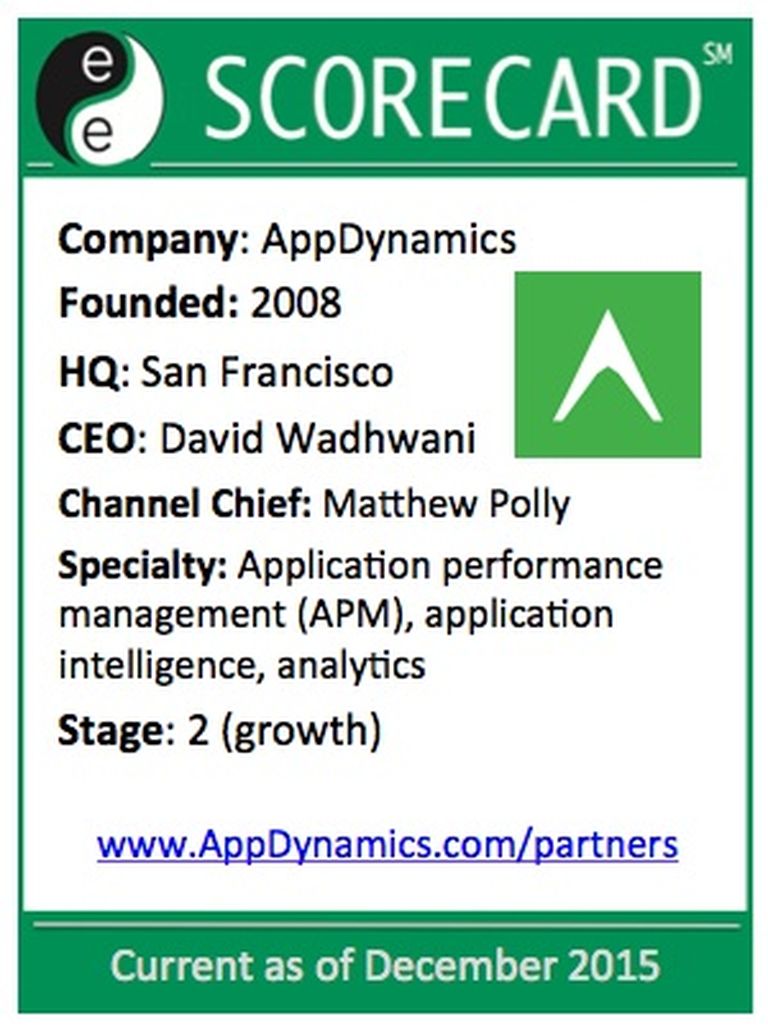
First, the big picture. AppDynamics, founded in 2008, has been growing more than 100 percent annually for several years now. The company's platform allows enterprises to monitor and manage applications and business transactions. While the APM market isn't new, a new round of tools and services help DevOps teams to more rapidly pinpoint application issues -- and fix them.
Behind the AppDynamics Partner Program
 Matthew Polly
Matthew PollyBut this is more than a direct sales story. Matthew Polly, VP of worldwide alliances and business development, arrived at AppDynamics in 2013. His mandate: Build a modern-day partner program -- but make sure it serves the evolving partner landscape. Polly spent 2013 white boarding the opportunity, and the AppDynamics started rolling out its partner program in 2014 -- fine tuning the incentives to ensure partners were engaged. And this year? "This year was about execution," says Polly.
AppDynamics is privately held and doesn't publicly disclose its channel revenues. But Polly shared a range of clues that reveal partner program momentum. The company's AppSphere 2015 conference earlier this month attracted more than 340 partner attendees representing more than 130 partner organizations.
Generally speaking, the AppDynamics Partner Program is organized to embrace and empower four market segments. They include:
Each segment has dedicated resources and each is "very healthy," Polly says. Without specifically revealing his big channel bets for 2016, Polly says managed services has continued to receive heavy investments.
Global 2000 Enterprise Partner Focus
Although thousands of MSPs focus on small business, AppDynamics prefers to focus its partner program on Global 2000 enterprise accounts -- where "many factors" are driving adoption.
Chief among them: DevOps, with a particularly strong focus on the operations side of customer success. "It's probably more important than the Dev side," says Polly. If you have a true DevOps culture that's agile then it's all about rapid release. And the code will contain something that's likely to break . By focusing on the Ops side, we're providing a common language across Development and Operations." As a result, he says, service providers and/or customers can more rapidly identify a problem and its root cause.
Some AppDynamics channel partners focus on the midmarket, along with state and local government. AppDynamics welcomes that business as long as there's a healthy ROI for all parties involved. "But there's plenty of headroom for our partners in the global 2000 market. APM isn't a new category, but our data science capabilities makes us revolutionary." As more and more applications get developed, AppDynamics is "right in the middle" of a data science and business data analysis revolution, he asserts.
The AppDynamics Platform

But what exactly is AppDynamics' secret sauce in the software world? It involves the shift from APM (application performance management) to application intelligence, according to Kalyan Ramanathan, VP of Product Marketing.
"Every company we talk to is becoming a software-defined business in some sense," he says. "They are building customer-facing applications, or maybe improving internal processes. When you're building and launching applications, they have to performance and respond well on every device, and they have to be accessible on every device."
AppDynamics' software -- available as a cloud service or as an on-premises software subscription -- analyzes application in a holistic way to help service providers and customers pinpoint and resolve performance issues.
But does the software work as advertised? Ramanathan points to several key performance indicators: The company has 1,800 customers, the business is growing 100 percent annually, and AppDynamics has a net promoter score of 85 -- a figure that's quite high for the technology market.
AppDynamics Enhancements
Still, the company isn't resting on its laurels.
AppDynamics' Winter '16 platform release features such enhancements as:
No doubt, the product and partner program enhancements are designed to drive customer success. But AppDynamics has another motivation as well: The ongoing pursuit of a potential IPO. The IPO chatter started in 2013 and grew far louder in 2015. Now, most company watchers expect 2016 to be "the year" for that event.
APM Competition Looms
AppDynamics certainly isn't alone in the next-generation APM market.
Publicly held New Relic also is growing fast and expanding the New Relic Partner Program. In the mid-market, SolarWinds promotes Server and Application Monitor. And in the SMB space, a lengthy list of RMM (remote monitoring and management) companies have introduced at least some basic APM capabilities.
Still, AppDynamics' primary focus is the Global 2000 market. Sales are more than doubling annually -- which should entice plenty of new partners into the AppDynamics ecosystem.



